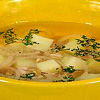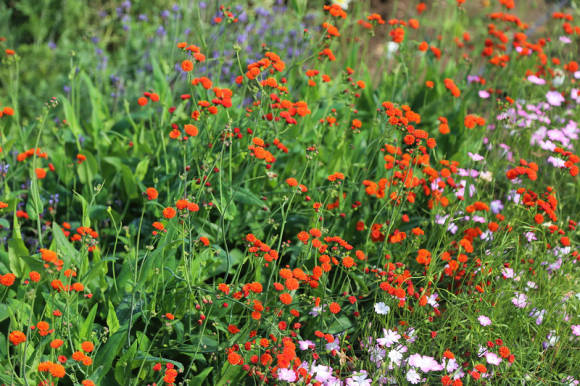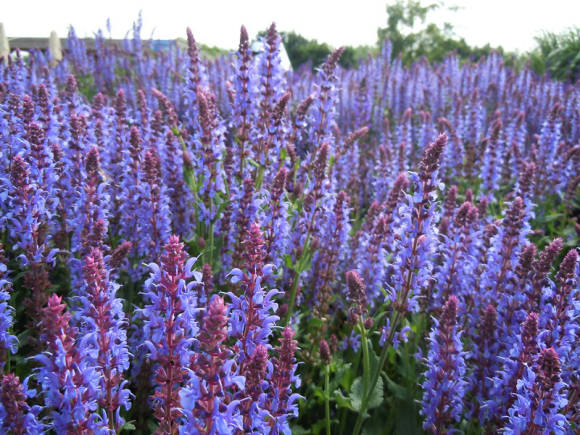
The fate of the Solikamsk Botanical Garden is closely intertwined with the centuries-old history of the Ural mining business. The origin of Solikamsk dates back to the 15th century, when the Russian settlement of Sol Kamskaya arose in the Urals. By decree of Peter I, under the leadership of V.N. Tatishchev began here the construction of salt brews. To attract labor, they built a log city on a high hill along the Usolka River, a tributary of the full-flowing Kama. But preserving the wooden settlement, surrounded by a fortress with towers, turned out to be difficult due to the raids of nomads and the merciless fires that raged in the 16th-18th centuries. Historians noted that wooden buildings were almost completely destroyed by fire 19 times. Each time the city was rebuilt again and continued its existence due to strategic necessity - here the only dirt road passed from Europe to Siberia (up to the Pacific Ocean) - the Babinovsky tract.

Once in Solikamsk, you immediately feel the spirit of distant antiquity, especially when you see the majestic Cathedral bell tower 60 m high, the white-stone Trinity Cathedral located next to it (1684). In the very center of the city there are the Transfiguration of the Savior (1683), the Vvedenskaya Church (1687), the elegant Epiphany Church (1687) sparkles with golden domes, the Holy Cross Cathedral (1698) is partially preserved. These monuments of ancient architecture are not inferior in their beauty to the creations of Suzdal, Vladimir, Novgorod and Pskov. It is surprising that the temples, built in the 17th century by Russian carpenters, are decorated with stone garlands, lace ornaments and balusters, as if carved from wood.

Modern Solikamsk is an industrial city known for its rich deposits of potash and magnesium ores. Solikamsk is remarkable for the fact that in 1731 it was here that the first botanical garden in Russia was laid. According to historical dates, both the Moscow Botanical Garden, founded in 1706, and the Academic Garden in St. Petersburg, created in 1714, at that time (in 1731) were pharmaceutical gardens, fulfilling their medicinal purpose, only later they became large botanical gardens ...
Grigory Demidov, the son of a large miner Akinfiy Demidov, dared to disobey his formidable parent and did not engage in mining, since he was very interested in plant breeding. He was so attracted to botany that in his estate in the village of Krasnoe (now part of Solikamsk) he began to grow unknown species for those places. Immediately after the wedding, the newlyweds set up a large garden, transferred tree species from neighboring forests and discharged from-beyond the borders of the seeds of outlandish plants. Local residents were surprised when they built a greenhouse: "Why do bushes need a hut, but with wide windows, why are they covering the roof with glass?" Grigory Demidov corresponded with many famous botanists of that time, with whom he exchanged plants and seeds. Naturalist Georg Steller, who in 1739 visited the garden in Solikamsk, provided invaluable assistance in identifying species, systematizing herbarium collections and tree collections. Thanks to Steller, G. Demidov met Karl Linnaeus, their correspondence lasted more than 15 years. Seeds, rhizomes and herbarium of plants from the Urals and Siberia, necessary for the knowledge of the Russian flora, were sent to Sweden.
 |  |  |
The botanical garden of Grigory Demidov grew and became more and more famous. In 1743, when the garden was visited by botanists I.G. Gmelin and S.P. Krasheninnikov, it contained 524 species of plants, among which were mallow, saxifrage, milkweed, Veronica, geranium, etc. The garden amazed with its greenhouse, where subtropical plants from all parts of the world grew: laurels, myrtle, aloe, agave, cacti and coffee, bananas and citrus fruits ripened. Pineapples from Solikamsk were regularly sent to the tsar's table.

However, this garden was not destined to have a long life. The sudden death of Grigory Demidov in 1761 led to the ruin of all collections. The estate in the village of Krasnoye was sold and divided between the heirs of the local breeder A.F. Turchaninov, and in 1810 the botanical garden completely ceased to exist. Most of the valuable plants from Solikamsk passed to the elder brother Prokofy Demidov, who also became interested in botany and already in 1753 began to build the well-known Neskuchny Garden in Moscow.
Only two centuries later, a favorable fate contributed to the revival of the botanical garden in Solikamsk. In 1980-87 years in the administration of Solekamsk the idea of recreating the memorial botanical garden of Grigory Demidov was born. Since at the site of the former garden, next to the Church of John the Baptist, the residential quarter has grown thoroughly and the central highway passes, they decided to find another, more spacious area. An area of 8.8 hectares was allocated for the botanical garden on the banks of the Usolka River.

In 1994, the second birth of the Solikamsk Botanical Garden, named MUP "Arboretum", began. The honorable and difficult task was headed by the director Anatoly Mikhailovich Kalinin, known for his boundless energy and craving for gardening. A small team competently mastered one hundred square meters, ennobling the abandoned city wasteland, helped by the city administration and the powerful mining enterprise "Silvinit". And in 2001, in a solemn atmosphere, on the wall of the Church of St. John the Baptist, to the ringing of bells, a memorial plaque was erected in honor of the 270th anniversary of the Solikamsk Botanical Garden, which depicts Grigory Demidov with an overseas pineapple in his hands.
Initially, in the botanical garden, the expositions with ornamental and floral plants were based on the personal collection of A.M. Kalinin, reflecting his long-standing predilections. The expanded and enlarged collection of plants over the years includes more than 670 taxa belonging to 88 genera from 39 families. The floristic diversity, unusual for the northern latitudes of the Perm Territory, is presented here. There are natives of North America and the Far East. As soon as you enter the territory of the arboretum, you immediately feel that you are in a garden of aromas and flowers. Conifers are planted along the main alley of the arboretum: western thuja, Douglas fir and monochromatic fir, mountain pine and Rumelian pine, berry yew, varietal junipers, deciduous trees and shrubs: barberries, spireas, chubushniki, lilacs and clematis willows, variegated leaves '(Salixintegra ‘Hacuro-Nishiki’)... Here you can see the large-leaved 'Laciniata' (Tiliaplatyphyllos ‘Laciniata’) with a dissected leaf, variegated maples and Karelian birches. The conditions in Solikamsk are so harsh that even the common oak or gordovina viburnum suffers greatly from frost.
On the territory of the garden, there is an endless rock garden with ponds, slides and many ground cover species: duchenee, thyme, milkweed and stonecrop. All plants are beautifully placed and carefully groomed. There are so many flowers, especially varietal lilies, tulips, gladioli, there are dahlias, hosts, astilbe and daylilies, that they barely fit in tight clumps. Business with the cultivation of seedlings and seedlings is organized in a businesslike manner. With thrifty owners, everything goes into business: even cable coils are adapted for flower beds.
 |  |  |
A zoo corner has been created on the fenced-in area where Brazilian ducks, an important uphill-footed rooster next to guinea fowls and geese roam, and trout splash in a dam on the Usolka River.

The director leads the introduction and educational activities, showing interest in many scientific issues. The botanical garden in Solikamsk has become one of the city's attractions. Visitors, students and schoolchildren are drawn to the green corner, filled with colors and aromas, for whom excursions are regularly held.
The Solikamsk Botanical Garden is blooming and fragrant on the Ural soil, confirming that while there are such “precious nuggets” as A.M. Kalinin, the noble cause started almost 300 years ago by Grigory Demidov has not been forgotten.









